Microsoft Teams is one of the fastest-growing collaboration tools there are, surpassing 270 million daily active users. Its multiple functionalities fill the communication and collaboration gap that many organizations experience in remote operations. This makes it an attractive tool for both small and large businesses. And while increased team creation is a great indicator of successful adoption, when done uncontrollably, it creates Microsoft Teams sprawl that poses governance and security challenges for organizations.
What’s Microsoft Teams sprawl and why is it a problem?
When users discover they are free to use Teams in the way they see fit, we can usually see a great number of teams created on demand with no supervision or governance in place. This leads to teams sprawl that results in appearance of an extensive number of teams with no clear purpose.
However, it’s important to highlight that simply creating many teams is not bad per se. It’s when they’re not properly created and used you actually have an issue. Let’s figure out what exactly constitutes teams sprawl.
Test teams
It usually starts with creating ‘Test teams’ that users try to better understand the tool and discover all its capabilities. They don’t have any other purpose rather than trying out the app. The problem is that you can end up having hundreds if not thousands of Test teams, that will cluster your workspace.
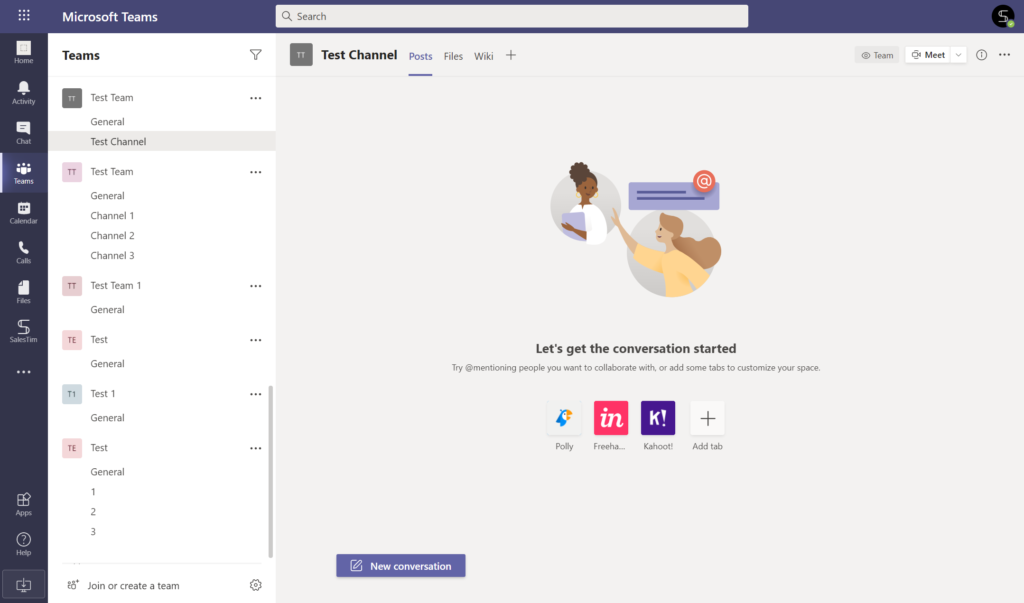
‘Team’ teams
Calling teams ‘Team’ is not just a tautological error. It creates inconsistency, making it almost impossible to navigate through multiple teams with a similar name. It inevitably hampers team productivity, making users resort to other solutions and, consequently, impeding the whole adoption process.
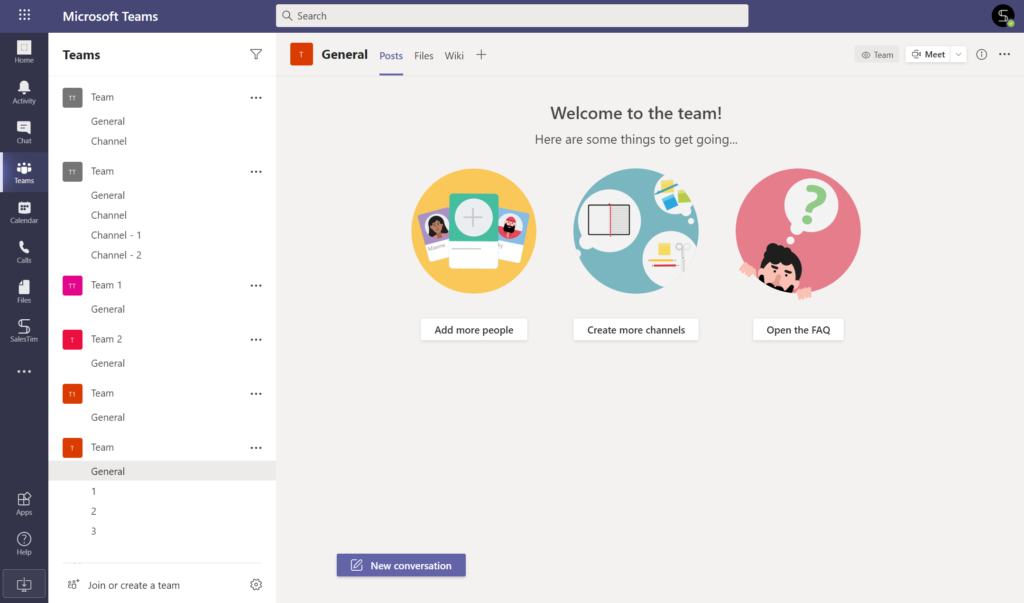
Too many teams on the same topic
When everyone can create a team, there’s usually little coordination over who is in charge of the process. As a result, you may get too many teams on the same topic. If you’re lucky, one of them will indeed be used to work on a project. Worst case scenario, however, is that elements of the same project will be scattered around numerous teams, creating confusion and chaos.
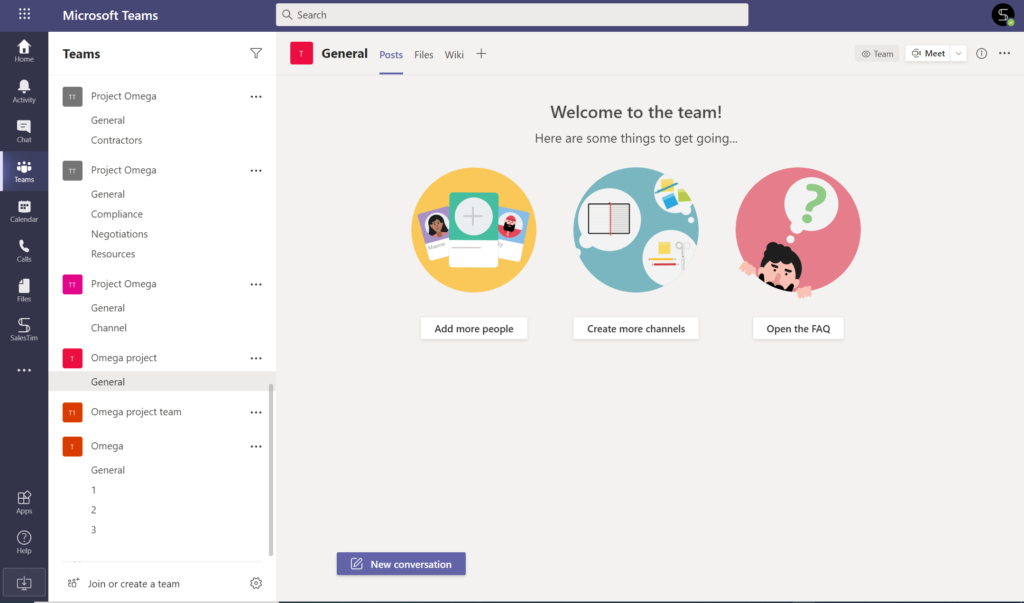
Teams with few users
If not well-informed about the purpose of teams, your employees may end up creating tons of teams with only a couple of members. Most of the time these are not necessary, and the topic that they were created for could be addressed in a specific channel or even a group chat.
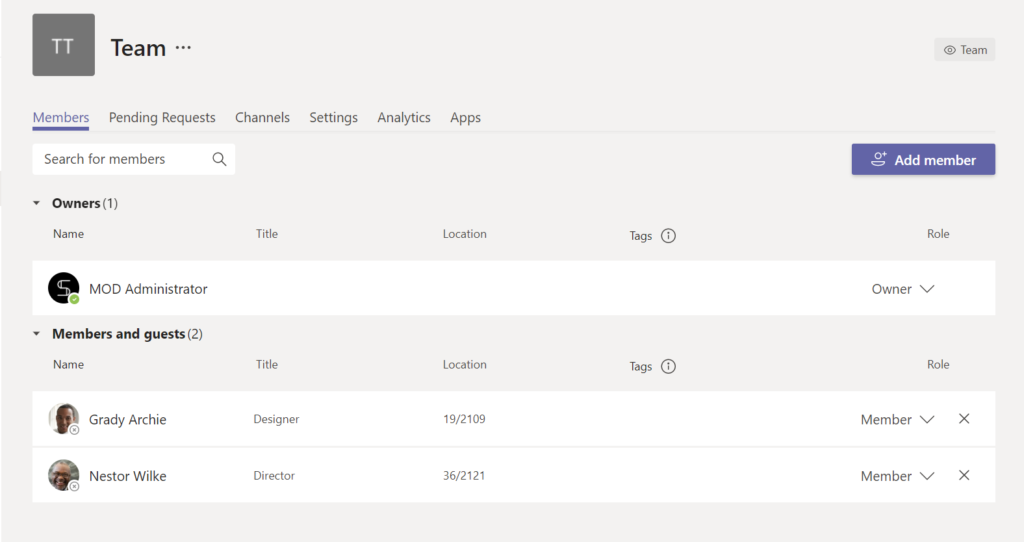
Many teams with only General channel
Another typical team that contributes to teams sprawl is the one that has only General channel created by default. In most cases, if your users only use one channel to work on a certain topic, there was no need to create an entire team for that.
All the above-mentioned teams constitute teams sprawl as they’re underused and do not serve the purpose of effective collaboration.
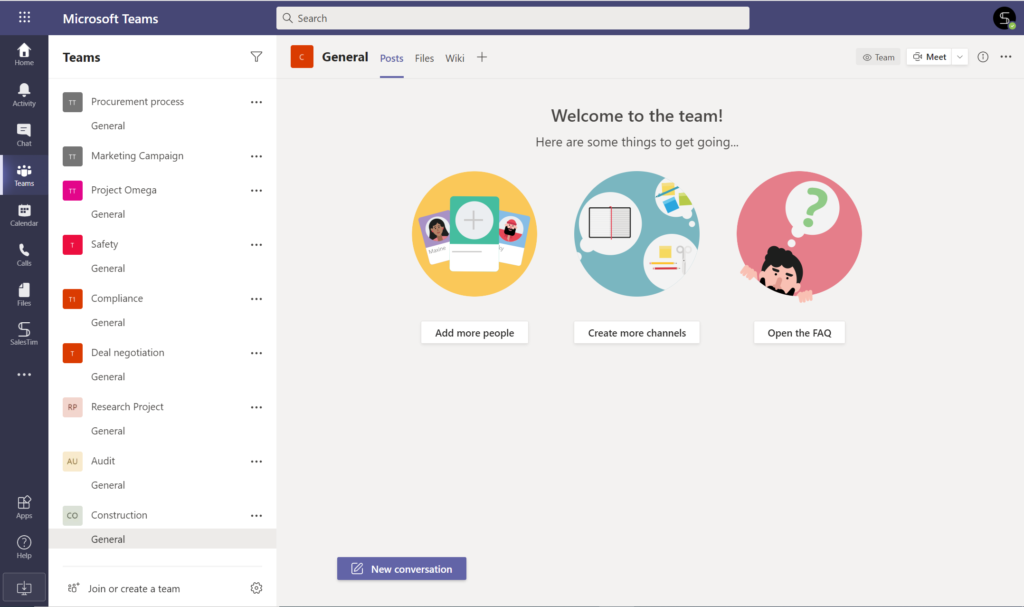
Reasons behind Microsoft Teams sprawl
Before we head to solutions for this issue, it’s important to understand what causes Microsoft Teams sprawl in the first place.
Deployment of Microsoft Teams in a rush
When deploying a new digital tool in a rush, complications are inevitable. Change management is a complex process that requires preparation and development of a strategy. Skipping any of the required steps may hinder the adoption process – in our case, by promoting teams sprawl.
If you’d like to learn about Teams adoption, we invite you to read our series of articles around Microsoft Teams Adoption Strategy.
No governance
If you don’t set up governance policies for Teams, then teams sprawl should not come as a surprise. Without any rules and regulations there is bound to be lack or organization and structure with teams.
It’s essential to at minimum regulate who can create teams. This will minimize the number of dead teams, set up a naming convention for better structure and discoverability and approval workflows.
There are multiple points to consider when establishing Teams governance. We invite you to learn more about them here.
Lack of training
Figuring out all the capabilities of Microsoft Teams can be challenging, and your employees require continuous training to better understand the technology. The reason why your users create Test teams proves the point – the simply do not know how to use them properly.
In fact, when users are duly trained and informed, they become more productive too since they don’t waste their time figuring out how certain Teams features work.
Training can be done in a variety of ways; you can learn more about it in this article.
Lack of communication on Microsoft Teams use cases
If your employees have no idea how they can implement Teams to improve their work, it’s definitely a red flag. Every department and team of your organization should understand why exactly they’re using Microsoft Teams to do their job and when they should create a new team. They need to differentiate the use cases for teams, channels, and group chats. Failing to communicate this information will inevitably result in teams sprawl.
The impact of Microsoft Teams sprawl
If you’re wondering why teams sprawl is such a big issue, here are some of its major impacts.
Loss of adoption
Teams sprawl complicates collaboration process, making it challenging to navigate through teams. Consequently, your users may look for other ways to collaborate, making all the adoption efforts go to waste.
Use of shadow IT
Another possibility is that your employees may resort to unauthorized apps to communicate, collaborate, share and store information. The problem with shadow IT is that your IT department has no control over what information is being shared and who has access to it.
Security issues
The use of shadow IT and lack of Teams governance can, consequently, lead to accidental leaks of sensitive information, system failures, data loss and other security issues.
Content chaos
With countless teams around similar topics, chances are your data is scattered all around your digital workspace. As a result, your company might store outdated and duplicated files, making it hard for users to locate, version and share the right documents.
How to fix Microsoft Teams sprawl
We can see that Teams sprawl causes quite a bit of headache for IT. On top of that, it has a negative impact on employees’ productivity. Once again, we’d like to highlight the fact that it’s not the number of teams you should worry about. What matters is their value and how they serve their purpose of improving collaboration efficiency.
So how do you prevent dead and underused teams from spreading and cluttering your workspace?
Change Management
Before deploying Teams, you may want to prepare an Adoption Strategy. This is one of the securest ways to ensure that your employees are ready for Teams and know how to use it for their specific use cases.
For that you’ll need to define your vision and establish executive sponsorship, set up different types of governance, prepare Teams use cases, determine success criteria and KPIs, organize communication and training plans, and get Champions onboard.
By carefully implementing each one of these steps you’ll ensure Teams buy-in and empower your employees to use it to the fullest.
Limit Office 365 group creation
Limiting Office 365 group creation is one of the most effective ways of limiting team creation. You can learn how to manage Office 365 group creation here.
However, when you limit who can create groups, it affects all services that rely on group access, including Outlook, SharePoint, Planner, Yammer, and other apps.

Your users may have other reasons for creating groups, rather than only team creation. Therefore, limiting this feature only for one use case might not be the most efficient solution.
Moreover, restricting team creation may add workload for the IT team who will constantly receive requests for creating new teams and channels. It will also prevent your users from embracing all the functionalities of Teams and using it to the fullest.
Which is why it’s essential to set up governance policies that will not only answer IT needs but will also allow a great user experience.
nBold solution for Microsoft Teams sprawl
The key to preventing Microsoft Teams sprawl to setting up team creation policies that will not only answer IT needs but also that of your end-users.
nBold Collaboration Templates allow you to establish strong governance policies that will help keep all the teams well-structured and give you control over team creation without limiting user experience.
Naming Convention capability will make sure your future teams follow the same naming policy. This will give a structure to teams, making them easy to navigate.
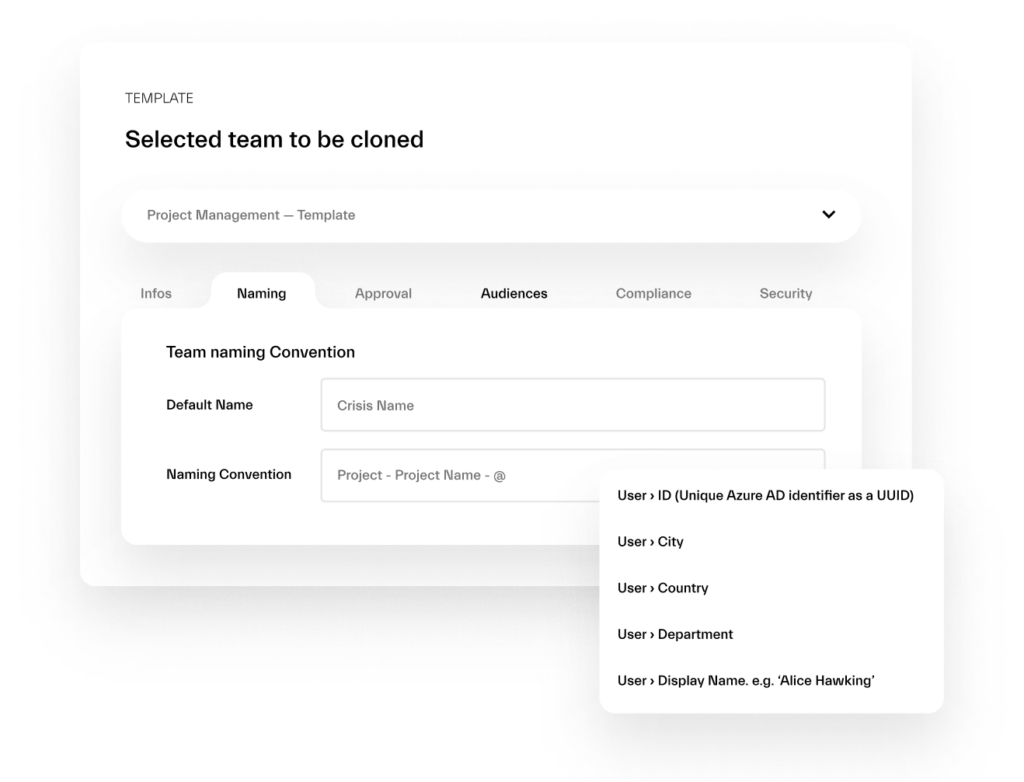
→Download White Paper: Microsoft Teams Naming Convention Best Practices
Approval Workflow enables you to delegate approval for team creation to any person or group of people withing the organization. Having specific members of your staff in charge of the approval process will make team creation more efficient and get some workload off the IT team’s shoulders.
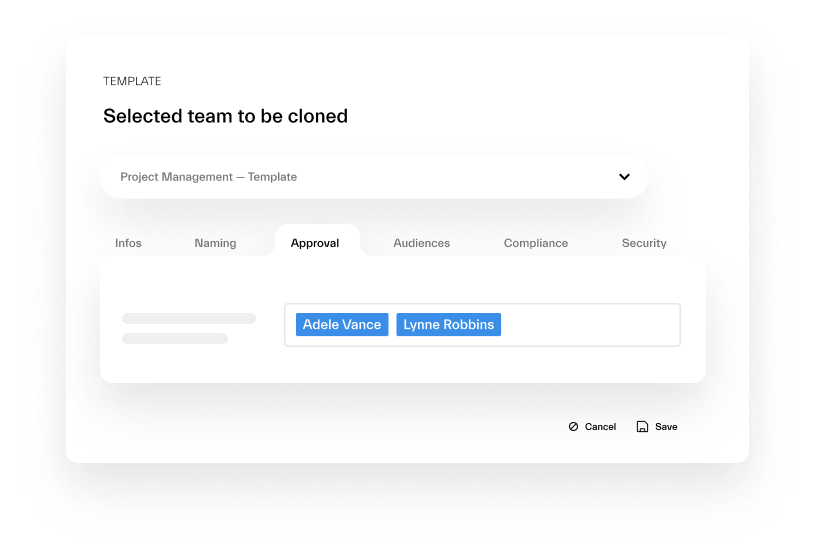
Audience Targeting controls the visibility of a specific template. If you wish only a certain group in your organization to use the templates (for example, just the French office), other employees won’t have access to it. This capability is a great solution for Microsoft Teams sprawl as it prevents users from creating unnecessary teams.
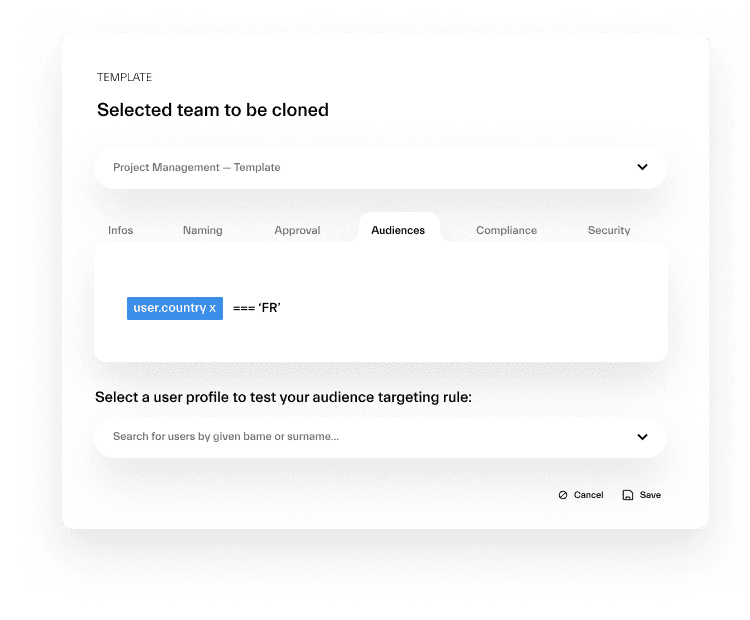
Permanent Ownership and Membership allows you to add specific users to all the future teams created from your template. The benefit of this capability is that it allows to monitor the use of teams and private channels.

You can create a whole Template Catalog with templates corresponding to every use case needed for your organization. Each template can be configured in a way that would benefit your users ,ost. Not only do collaboration templates not limit Teams functionalities for your employees. They actually help them create teams that they could use to the fullest.
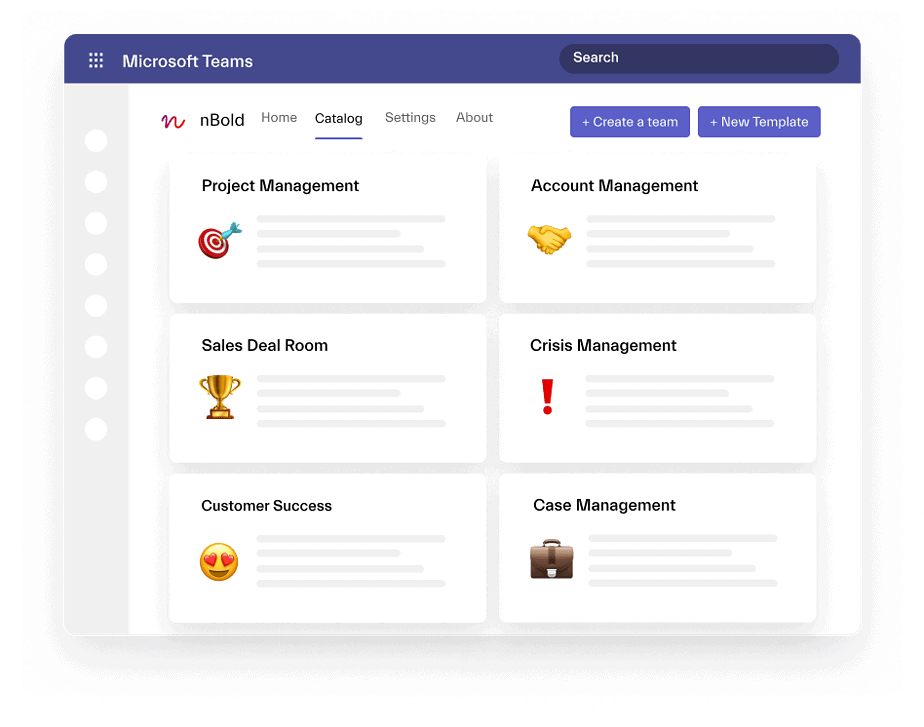
Get in touch with our team and let’s see how we can
